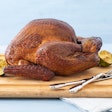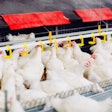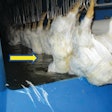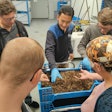I posted an article some weeks back about consumer education and engagement.
It was based around a UK survey of school children who were asked about food, and a surprisingly high number responded that fish fingers were made from chicken. This finding was picked up by various media channels, and I am sure that it brought a smile to more than my face.
Consumer engagement and education, of course, is nothing new. For decades, marketing books have looked at the best way to engage with consumers, while consumer rights groups have pressed for more honest communication and greater access to information.
What surprised me about the article, however, was the number of responses that it generated. Some were from producers, saying that consumers need to be better informed about how their food is produced and offering some suggestions as to why they are not more enlightened, while others came from the consumer side, arguing that producers and regulators need to be more transparent.
There is certainly some common ground here, so it is worth considering where and why this disconnect is really happening.
Is what you get what you see?
As a child, I used to walk home from school and, on the route home, there were two butchers' shops. In the windows, you could see pig heads and small carcasses cut in two and hanging from large hooks. You might also see pheasants and I suppose other birds too. You could see the saws and electric cutters, as well as ready-prepared cuts of meat. You could see the odd pool of blood too, but where blood tended to pool there were usually strategically placed bunches of plastic parsley, so things were not quite as harsh as they could have been!
I used to live in a small village - now I live in a city - and back then, supermarkets were certainly not as dominant as they are now. Nevertheless, there are a couple of family-run butchers' shops where I live, but they do not display heads nor whole or even halves of carcasses. There is, however, meat that is unpackaged laid out on trays.
On a visit to the meat section in my local supermarkets, all meat is packaged, and while the meat counter may try to replicate a traditional butchers, there is something missing: no heads, no carcasses and no birds still with feathers.
It may be that health and safety rules and regulations dictate that carcasses, etc. should not be hung in windows, but having birds and animals, or at least recognizable parts of them, on display is a good reminder to consumers to what is actually being eaten, and a good starting point in consumer education. If you are repulsed by pig heads, or the sad expressions of hanging pheasants, you can choose not to eat them. If you are not, you can make your purchase. At least you know what you are or are not buying.
And while I am not suggesting that the supermarket should have all the chickens that it sells in a day hanging from the ceiling, or that portions should be cut up on premises, given the space that these establishments dedicate to marketing and promotions, there ought to be space somewhere for people to see where their foods comes from. Openness, in the long-term, would probably be to the benefit of all us.



















